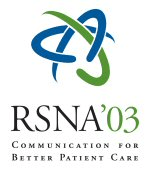Abstract:
HTML
Purpose: Our purpose is to present hemorrhagic transformation after brain ischemia and to differentiate it from hemorrhagic complications after ischemic events. We also tried to investigate the patterns of cerebral infarction with hemorrhagic transformation and to investigate its relationship with hemodynamic impairment of the patient and other risk factors.
Methods and Materials: 165 consecutive patients with ischemic cerebral infarctions were included in our study. The age of the patients ranged from 55 to 82 years. All patients had cerebral CT examination, before and after the administration of contrast media, within 24 hours after the initial onset of symptoms. Follow-up CT scans, before and after the administration of contrast media, were undertaken in all patients within a week period after the initial CT examination.
Results: 141 had ischemic infarctions presented as hypodense areas in all CT examinations. 24 patients showed hemorrhagic transformation of the ischemic territory. In regards to location all the above 24 infarctions were located 10 in the basal ganglia, 10 in the cerebral hemispheres, 3 in the brainstem and 1 in the cerebellum. Regarding the territorial arterial supply, 16 were localized in the anterior circulation and 8 infarctions were localized in the supply areas of the posterior circulation. Usually the infarctions that showed hemorrhagic transformation were larger with mass effect due to vasogenic edema. In the follow-up CT scans 21 patients with hemorrhagic transformation of the ischemic territory showed multiple hyperdense areas within the initial hypodense ischemic area. In three patients there was the morphology of intracerebral hemorrhage in the ischemic territory and we did not consider this appearance as hemorrhagic transformation. From the 24 patients with hemorrhagic transformation 12 had recent myocardial infarction and 10 patients had diabetes mellitus.
Conclusion: A thorough understanding and careful assessment of hemorrhagic transformation and differentiation from hemorrhage is helpful for the therapeutic strategies in stroke patients.
Testempassi MD, E,
Hemorrhagic Transformation after Cerebral Ischemia. Radiological Society of North America 2003 Scientific Assembly and Annual Meeting, November 30 - December 5, 2003 ,Chicago IL.
http://archive.rsna.org/2003/3101042.html

